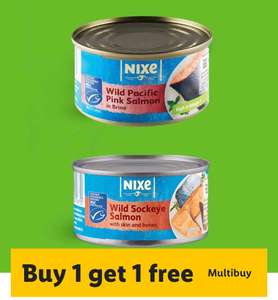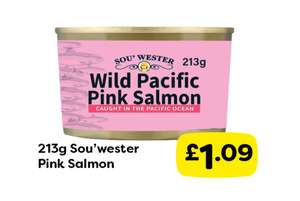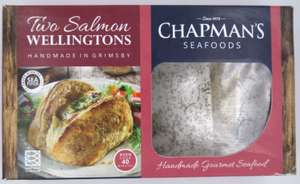

Salmon Deals & Offers
1 active deal10,788 commentsAll Salmon discounts and offers overview - May 2024

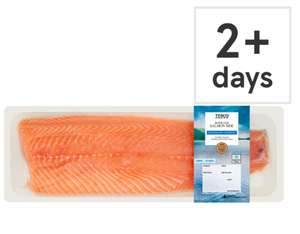
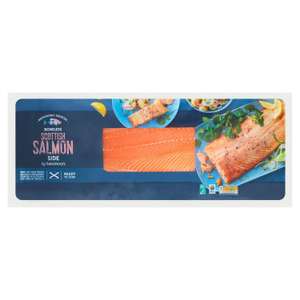

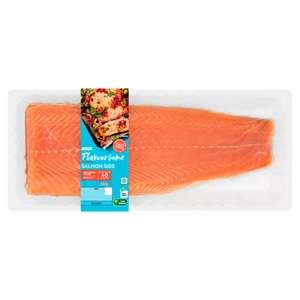
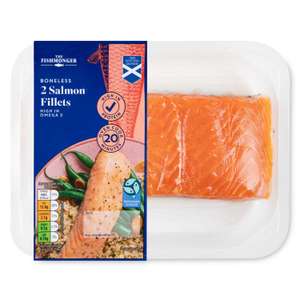
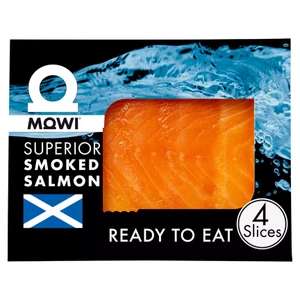
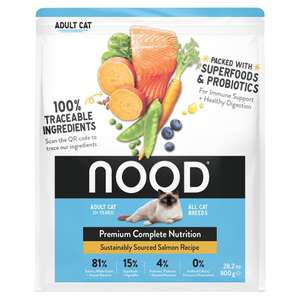

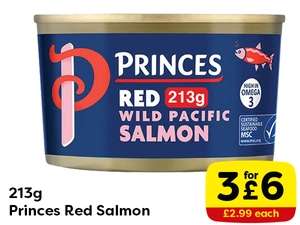

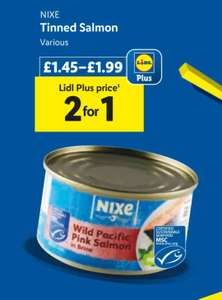

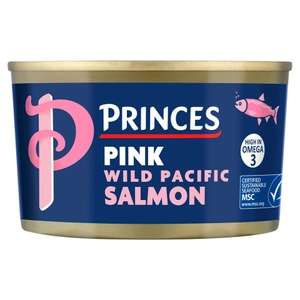
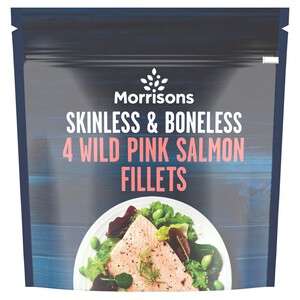
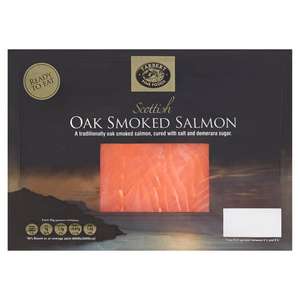
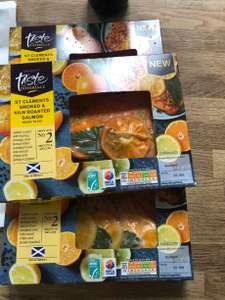
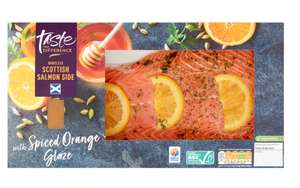
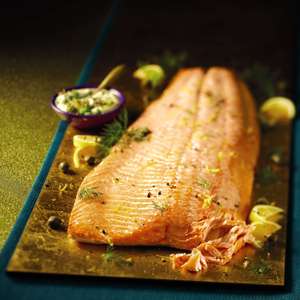
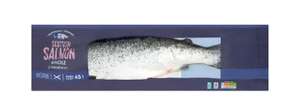
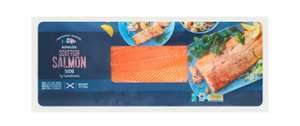
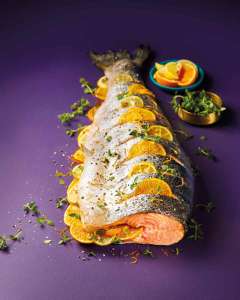
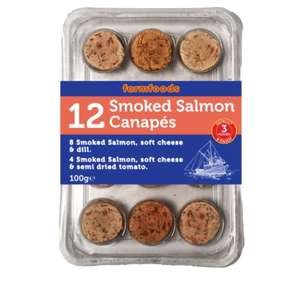

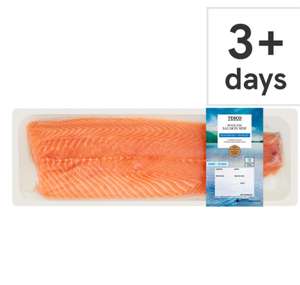

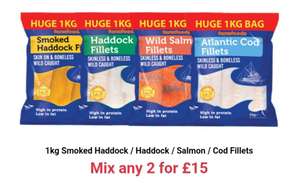
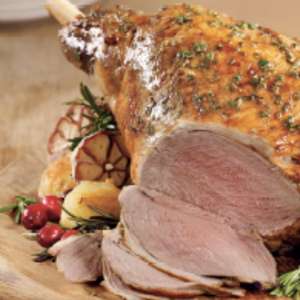
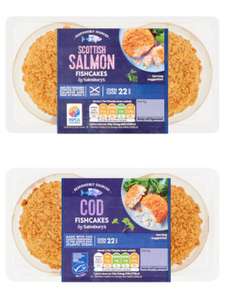
Salmon: Tasty Fish With a Simple Preparation
Salmon is one of the most commonly eaten seafood in the UK, it’s often served in restaurants or as a party food, but can be cooked quickly and simply at home. From pasta dishes to tarts and oriental-style stir fries, salmon can add a touch of luxury to a mid-week meal. It’s also an excellent way of getting a good range of vitamins and essential fatty acids, like omega-3, into your diet.

Easy to Prepare and Nutritious
Since prehistoric times humans have gained nutrients from seafood. Fish were farmed in lakes by ancient Roman, Chinese and Assyrian peoples, and the name Salmon is from the Latin, Salire, which means to leap. It’s a large fish that can reach up to 26kg in weight, depending on the species. Naturally found in fresh water and large oceans like the Pacific and the Atlantic, salmon are also farmed in many parts of the modern world, including the west coast of Scotland. Salmon was first introduced to the UK as a delicacy in the 1800s, it was brought here by European immigrants who smoked the fish to preserve it.
Popular Types of Salmon in the UK
Once you know more about the various types of Salmon available, you’ll have a better idea of what to expect when cooking or eating the fish.
Coho – Coho salmon is available from many different retailers and is perfect for keeping in the freezer until you’re ready to use it. In general, it’s best to buy fresh Coho from mid-July onwards, because they bulk up more as the season progresses.
Pink – Probably the mildest tasting salmon and quite a fragile meat, the Pink salmon is best eaten or preserved the day it is caught. This type of fish doesn’t age well and is rarely frozen, as it breaks apart too easily. That’s why you’ll usually find Pink salmon in tins. It’s the perfect choice for making salmon cakes.
Keta – Sometimes called Chum, Keta salmon is often used in smoking as it has a very low-fat content compared to the other varieties. The roe of this salmon is also extremely popular.
Sockeye – A fish that’s usually deep red in colour, there are also greyer varieties from cooler waters that taste great. Sockeye salmon bulk up for long river journeys, so they contain lots of fat and a deep, rich flavour.
Which Parts of a Salmon to Use
Depending on the recipe you have in mind, some parts of a salmon are better than others. Here are some ideas for choosing the best meat:
The tail – Generally a cheap cut of fish, the tail is packed with muscle and can be slightly tough. However, if you’ll be tenderising it through chopping or marinating, then the tail will still be an excellent choice.
The belly – The oiliest part of the salmon, the belly is ideal for recipes that use braising.
Fillet or loin – Cut from the side of a salmon, fillets are considered the prime portion of fish meat. They are lean and tasty but need very little cooking otherwise they can dry out. Pan frying is best, as this technique takes just a few minutes.
Collaror second cut – The area around the back of the head and fins, the collar is another cheaper cut which lends itself well to roasting or cooking in dish like a pasta bake.
What Quantity is Needed and How to Store the Salmon?
If you get a good whole salmon offer, work out single portion sizes based on 110 g for each starter and 170 g for each main course. Before the fish is cooked or processed, keep it in a covered container in the fridge. Make sure that the cold chain is not interrupted from the store to your home.
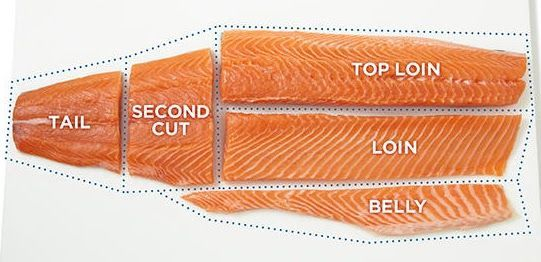
5 Indicators to Select the Best Fresh Whole Salmon
The way you buy salmon should depend on how you plan to prepare or cook it. If you buy fresh, you can always ask the seller how old the fish is, but there are other indicators:
Smell – It may seem odd but fresh portions of fish should not smell fishy, they should smell of the sea. If you’re unsure of what that means, think of a salty ocean breeze.
Fins – These should still have definition and appear perky. Split or damaged fins could indicate the fish has been roughly handled in transit, whilst dry and brittle fins suggest the fish is getting old.
Skin – In a fresh salmon, the scales look firm, strong and shiny. There should be a metallic finish and they should be wet, instead of dry and flaky.
Gills – The salmon’s gills should be a vibrant red or pink in colour, but as the fish begins to go past it’s best they will darken to brown. Also, they should feel cool and clean to the touch, rather than slimy.
Eyes – Eyes that have red spots, are cloudy or sunken into the head, should be avoided. Bright clear eyes are a great indicator of freshness.
2 Indicators to Select the Best Pre-filleted Salmon
Even if you buy fillets, there are ways you can spot the freshest pieces:
Check for water and breaks – Cracks and white lines running through the fillets indicate rough treatment, whilst pooled water suggests an older piece that is losing moisture.
A consistent colour – Salmon is considered a darker fish, so the flesh should be colourful. Check for a glossy, wet surface, rather than a dry one as that could indicate it has been stored improperly.
Raw Salmon Dishes
Salmon can be eaten raw in a range of recipes, just make sure you buy fresh for the best taste. Here are three ways to serve raw salmon:
Sashimi – A dish from Japan that is made from very fresh raw fish, Sashimi is often compared to Sushi, but it is not served with rice. Instead, the fish is accompanied by soy sauce, wasabi, pickled radishes and ginger as an appetiser.
Pokē – Traditionally a Hawaiian dish made with tuna, pokē is a raw fish salad usually served as a starter. The recipe also works perfectly with salmon, just chop the fish, then add spring onions, garlic, soy sauce and sesame seeds. Blend, add salt, then chill before serving with oat cakes or crackers.
Ceviche – A common dish on the menus of many fine dining restaurants in the UK, Ceviche originated along the seaboard of Latin America. It involves adding citrus juices to chopped salmon in order to cure it. Fans of the dish say it really brings out the moreish texture of quality raw salmon.

Preparing Salmon Before Cooking
Most people buy individual fillets of salmon from the supermarket and these require very little preparation. Often labelled as Salmon steaks, they are great for grilling or roasting in the oven. If you buy a larger cut of salmon it may come with the skin on. This is easy to remove, but is completely edible and can be left on if you’d like a crispy finish.
Salmon in a tin comes with soft bones that can be eaten, but fillets that are sold with bones will need some preparation:
Run your hand along the fish to locate pin-bones.
Use a pair of fish boning pliers to grab the tips and pull them out.
Remove any leftover bones from the fish.
How to Cook Salmon
There are many different ways to cook salmon, here are five of the most common methods:
Pan-fried salmon – Use a little oil or melted butter to brush the fish, then lay it onto a heated frying pan with the skin facing down. Fry the fish for around four or five minutes on each side, or less for a smaller piece. You can tell when the fish is cooked as it will start to change colour right through to the middle. Keep turning for two or three more minutes, until the salmon is thoroughly cooked.
Grilled salmon – Start by brushing the fish and the pan with oil or a little melted butter. Next, place the salmon into a pan with the skin side facing upwards. Turn on the grill and allow it to get very hot, before popping under the salmon and grilling for around three or four minutes on each side. When the fish feels firm and the flesh is opaque, it is ready to serve.
Oven-baked salmon – Oven baking a salmon gives you a chance to prepare other parts of the finished meal. Begin by preheating an oven to Gas Mark 6, or 200°C, or 400°F. Next, season the fish, place it on a greased baking tray and cook for ten to fifteen minutes.
Poached salmon – Poaching will cook salmon well, and it doesn’t require any added fats. Fill a large, deep pan with enough water to cover the fillets, and add seasoning, along with herbs and lemon to taste. Over a gentle heat bring the water to a simmer and slide in the fish before covering. Leave for 25 minutes, then remove and drain before serving.
Steamed salmon – Also known as Salmon en Papillote, this method retains moisture, as the fish is wrapped in baking paper or foil. Start by preheating the oven to Gas Mark 6 or 200°C, or 400°F. Cut the paper or foil to shape, place in the fish and season. Then add oil and lemon to taste, and close up the package. Bake for twelve to fifteen minutes, then serve immediately.
4 Ways to Cook Salmon

What’s Different About Smoked Salmon?
Smoked salmon was first eaten in the UK some 200 years ago. British fishermen did not realise the fish could be caught off the coast of Scotland each summer, so it was imported. The smoking process preserved the fish at a time when refrigeration was unreliable, keeping it edible for longer and producing a distinctive taste. Once Scottish salmon was discovered, smoked salmon become a home-produced treat, favoured by turn-of-the-century fine dining restaurants and delicatessens. Today there are some producers, like Forman and Field who smoke salmon the traditional way. This involves hand filleting, dry-curing with rock salt, then hanging over oak and beech smoke.
Today, smoked salmon is still considered a high-end product and it can be expensive. However, cheap smoked salmon can be bought in small amounts to use in scrambled eggs, on top of crackers, stirred into pasta or in a quiche. Smoked salmon delivers huge amounts of flavour, so you can add it sparingly.
Benefits of Eating Salmon
Whether it’s baked, seared, or grilled, salmon is a very healthy choice. Here are some of the reasons why:
It’s rich in Omega 3– This is an essential fatty acid which could cut the risk of heart disease and keep skin looking good. It’s also known to aid neurological growth in unborn babies. Authorities like The American Heart Association recommend two or three omega 3-rich meals per week, in order to gain the maximum benefits.
It can help with weight loss– A serving of salmon provides more than half of an adult's recommended daily protein intake. Protein helps you maintain a healthy metabolism which can encourage weight loss. Moreover, it makes you feel fuller for longer.
Salmon is packed with B-vitamins– Salmon contains vitamins B12 and B6, both of which offer a raft of potential health benefits. Together they can increase your energy levels, lower cholesterol, and give your immune system a bump start.
It provides a healthy dose of vital minerals– We only need small amounts of selenium, but it’s an important part of our diet. Studies have shown it can safeguard the nervous system from age related illnesses and increase feelings of well-being. An average serving of salmon gives you half the recommended daily dose of selenium.
How to Get Salmon at the Best Price
All the major UK supermarkets, like Waitrose, Aldi and Tesco, sell a selection of fresh, frozen and tinned salmon. At Marks & Spencer, you can buy a range of luxury pre-prepared salmon dishes and at Sainsburys, you can shop for salmon dishes in their basics range. Alternatively, you can opt to have fresh salmon delivered straight to your door by an online fishmonger like Fish for Thought.
Salmon is available all year round, though it can be cheaper at Christmas when the bigger supermarkets, like Tesco and Asda compete with each other for customers. At other times of the year, you can look out for seasonal deals at Morrisons which has a large fish counter, and Amazon which sells a range of salmon products. On Black Friday, you can find food deals that include salmon at most major supermarkets, and at Notonthehighstreet.com you can shop for cut price salmon gift kits.
Salmon Offers at the Best Quality Here at hotukdeals
Home cooks and professional chefs can source the best prices on this gourmet fish, by visiting hotukdeals. We keep a regularly updated salmon page, with details of every offer and reduction available.
